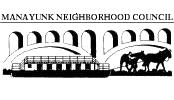The Philadelphia Inquirer
RULING CLEARS WAY FOR MANAYUNK UNITS
Luxury apartments on flood-prone Venice Island got the green light
from Commonwealth Court.
Tom Avril INQUIRER STAFF WRITER
One of two controversial luxury
apartment projects proposed for flood-prone Venice Island is back on, thanks
to a Commonwealth Court decision this week.
The decision, issued Monday, reversed a lower court and clears the way
for Dranoff Properties to build 160 loft units on the island, located
between the Manayunk Canal and the Schuylkill.
A decision is still pending on a separate, 270-unit project proposed
by Realen Properties.
Members of neighborhood groups that oppose the projects said they were
stunned by the latest development in the saga, which began in 1999.
A decision on whether to appeal to the state Supreme Court will wait
until after the holidays, said Darlene Messina, president of Friends of
Manayunk Canal.
"I am still in real shock," Messina said.
She predicted that the canal and Manayunk's Main Street would flood more
frequently if the apartments were built, endangering residents and harming
the environment.
Developer Carl Dranoff disputed Messina's claims, saying that the opposite
was true.
Hydrologists hired by Dranoff testified that because the project would
replace several squat, 1950s-era industrial buildings with loft apartments
perched on columns, the obstructions to floodwaters would be reduced by
30 percent.
Those findings were initially supported by the
Zoning Board of Adjustment, which was overruled in August 2001 by Common
Pleas Court Judge Flora Wolf.
In the decision Monday, a three-judge panel reversed Wolf, ruling that
the Zoning Board is the fact-finding body and has "exclusive province
over matters of credibility and weight to be afforded the evidence."
Dranoff praised the decision.
"We look forward to moving ahead with the project," he said. "We would
be removing the obstacles that tend to make the flooding worse."
The site for the proposed apartments lies within the 100-year floodplain
(defined as that area that will flood once a century) and also within
the floodway (that part of the flooded area in which there would be a
current). Yet residents say the 100-year designation is misleading, given
that the island has flooded 10 times in the past 130 years.
In addition to the apartments, Dranoff's plan calls for 214 parking spaces
on the 3.2-acre site. An elevated pedestrian bridge would be constructed
for emergency evacuations.
While some of the apartments will be in new buildings on columns, some
will be located in a historic 150-year-old former textile mill, which
later was converted into the Namico soap and detergent plant, Dranoff
said.
The island was zoned industrial until City Councilman Michael Nutter
got legislation passed to change the zoning to residential.
Yesterday, Nutter said the Dranoff project, which lies within his district,
was an "exciting" reuse of a decayed industrial site that will help increase
the city's population.
He said he shared the residents' groups about flooding but thought the
plan was good overall.
"When you add it all up, I think it is a good thing," Nutter said.
Opponents disagree vehemently.
Geoff Goll, an engineer with New Jersey-based Princeton Hydro, said the
plan would put lives in danger.
Even if the buildings on columns will reduce obstacles to floodwaters,
those spaces under the apartments could easily be jammed by floating logs,
trucks or other debris, said Goll, who testified for the residents' groups.
When the flooding occurs, lives and property will be endangered, and federal
taxpayers will foot the bill, he said.
"It's a shame that they have disregarded the fact that the trend in the
United States is to move development out of floodplains," Goll said. "They've
decided to buck the trends and put the lives of potential residents in
danger."
Contact staff writer Tom Avril at 215-854-2430 or tavril@phillynews.com.
Copyright (c) 2002 The Philadelphia Inquirer

|



